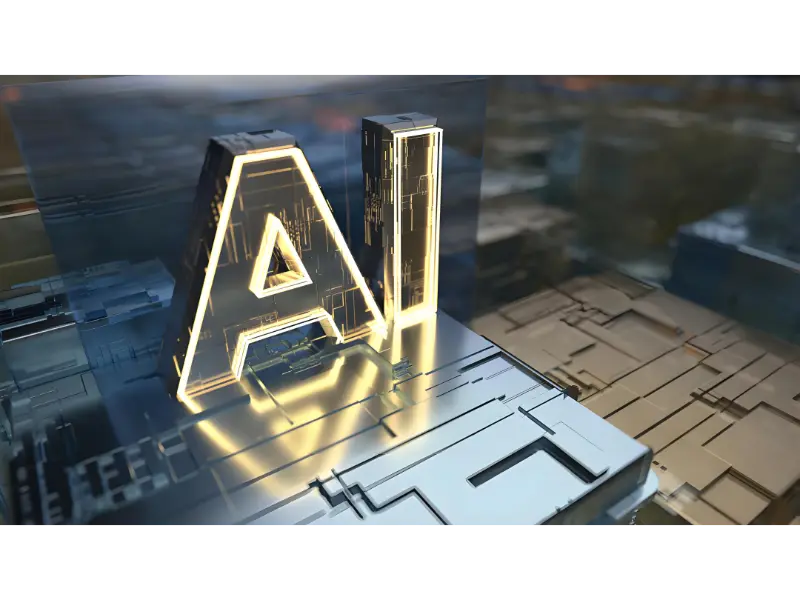- Artificial intelligence, or AI, is a technology that enables computers and machines to simulate human intelligence and problem-solving capabilities.
- Artificial intelligence can be used alone or in combination with other technologies (e.g., sensors, geolocation, robotics) to perform tasks that would otherwise require human intelligence or intervention.
- The goal of AI is to create systems that can perform tasks that typically require human intelligence.
- AI technologies have a wide range of applications across various industries, including healthcare, finance, transportation, entertainment, and more.
Artificial intelligence (AI) has become ubiquitous in daily life, subtly weaving into the fabric of what we do. From personalised recommendations on streaming platforms to voice-activated virtual assistants streamlining our tasks, AI is revolutionising how we interact with technology and making life more efficient and convenient than ever before.
As AI continues to evolve and permeate various aspects of society, its transformative impact on daily life is undeniable, promising a future where mundane tasks are automated, decisions are optimised, and human potential is amplified.
What is artificial intelligence
Artificial intelligence is a technology that enables computers and machines to mimic human intelligence and problem-solving abilities, it can be used alone or in combination with other technologies like sensors, geolocation, robotics to perform tasks that would otherwise require human intelligence or intervention.
As a field of computer science, artificial intelligence encompasses machine learning and deep learning.
These disciplines involve the development of AI algorithms that are modeled on the decision-making processes of the human brain and can “learn” from available data and make increasingly accurate classifications or predictions over time such as learning, problem-solving, perception, reasoning, and decision-making.
The goal of AI is to create systems that can perform tasks that typically require human intelligence.

Types of artificial intelligence
Artificial intelligence can be categorised into different types based on its capabilities and functionalities.
Here are some common types of AI.
Narrow AI (Weak AI or artificial narrow intelligence (ANI)): this type of AI is designed and trained for a specific task or set of tasks. Narrow AI systems excel at performing a single task efficiently but cannot generalise or apply their knowledge to other domains.
Narrow AI drives much of the AI around us today, such as Apple’s Siri, and Amazon’s Alexa.
General AI (Strong AI): general AI, also known as strong AI, would possess human-like intelligence and be capable of understanding, learning, and applying knowledge across a wide range of tasks and domains.
However, true general AI has not yet been achieved and remains a theoretical concept.
Also read: Adobe Premiere Pro’s generative AI tools make video editing easier
Different approaches to AI
Symbolic AI: also known as “Good Old-Fashioned AI” (GOFAI), this approach involves programming computers with rules and symbols to represent knowledge and perform reasoning tasks.
Machine learning (ML): ML is a subset of AI that focuses on the development of algorithms that allow computers to learn from and make predictions or decisions based on data. This includes techniques like supervised learning, unsupervised learning, and reinforcement learning.
Deep learning: deep learning is a subfield of ML that utilises artificial neural networks with many layers (deep neural networks) to learn from large amounts of data. It has been particularly successful in tasks such as image and speech recognition.
Also read: Automakers Magna to trial Sanctuary AI’s humanoid robots
Artificial intelligence applications in real life
AI technologies have a wide range of applications across various industries, including healthcare, finance, transportation, entertainment, and more. As AI continues to advance, it has the potential to revolutionise many aspects of human life, but it also raises important ethical, social, and economic considerations that need to be addressed.
Personal assistants: virtual assistants like Siri, Alexa, Google Assistant, and Cortana utilise AI to understand and respond to voice commands, manage schedules, set reminders, and provide information on various topics.
Online shopping recommendations: e-commerce platforms like Amazon and Netflix use AI algorithms to analyse user preferences and behaviour to suggest products, movies, or shows that are likely to be of interest.
Social media: AI algorithms power personalised content feeds on platforms like Facebook, Instagram, and Twitter. They analyse user interactions and preferences to show relevant posts, ads, and recommendations.
Customer service chatbots: many companies employ AI-powered chatbots to handle customer inquiries and provide support on websites and messaging platforms. These chatbots can answer frequently asked questions, troubleshoot issues, and even make reservations.
Navigation apps: GPS navigation apps like Google Maps and Waze use AI to analyse traffic patterns, predict travel times, and suggest optimal routes based on real-time data.
Smart home devices: AI enables smart home devices like thermostats, security cameras, and lighting systems to learn user behaviour and adjust settings automatically for comfort, energy efficiency, and security.
Healthcare: AI is increasingly being used in healthcare for tasks such as medical imaging analysis, personalised treatment recommendations, drug discovery, and remote patient monitoring.
Language translation: AI-powered translation tools like Google Translate use neural networks to translate text between languages accurately and rapidly.
Financial services: AI algorithms are employed in fraud detection, risk assessment, algorithmic trading, and personalised financial advice.
Autonomous vehicles: while still in development, self-driving cars utilise AI for tasks like object detection, path planning, and decision-making to navigate safely and efficiently.
These examples demonstrate how AI is integrated into various aspects of modern life, making processes more efficient, personalised, and convenient.

Artificial intelligence in the future
AI holds immense promise for the future, with advancements poised to reshape nearly every aspect of human life.
Here are some potential developments.
Human-AI collaboration: rather than replacing humans, AI will increasingly work alongside people, augmenting their capabilities and productivity. This collaboration could lead to more efficient workflows, innovative problem-solving, and enhanced creativity.
AI in healthcare: AI has the potential to revolutionise healthcare by improving diagnostics, personalised treatment plans, and drug discovery. AI-powered medical devices, predictive analytics, and virtual health assistants could lead to better patient outcomes and more accessible healthcare services.
Autonomous everything: from self-driving cars to drones and robots, autonomous systems powered by AI will become increasingly prevalent. These systems will enhance efficiency, safety, and convenience across industries such as transportation, logistics, manufacturing, and agriculture.
AI for sustainability: AI can play a crucial role in addressing environmental challenges by optimising resource use, reducing waste, and facilitating the transition to renewable energy sources. Applications include precision agriculture, smart energy grids, and climate modelling.
Ethical AI: as AI becomes more pervasive, ethical considerations will become paramount. Efforts to ensure fairness, transparency, and accountability in AI systems will be essential to mitigate biases, prevent discrimination, and uphold human rights.
AI in education: AI-driven personalised learning platforms can adapt to individual student needs, improving engagement and outcomes. Additionally, AI-powered tools for educational content creation, assessment, and tutoring could transform teaching and learning methods.
AI for social good: AI has the potential to address pressing societal challenges, such as poverty, inequality, and access to healthcare and education. Applications include AI-driven social services, humanitarian aid, and disaster response systems.
AI governance and regulation: as AI technologies become more complex and influential, policymakers will need to develop robust regulatory frameworks to ensure their responsible development and deployment. This includes considerations of privacy, security, and accountability.
Brain-computer interfaces (BCIs): BCIs that interface directly with the human brain could enable seamless communication between humans and machines, revolutionising fields such as healthcare, gaming, and accessibility.
AI superintelligence: speculatively, the emergence of superintelligent AI—AI that surpasses human intelligence in all domains—poses both existential risks and transformative opportunities. Safeguarding against unintended consequences and ensuring alignment with human values will be paramount.








